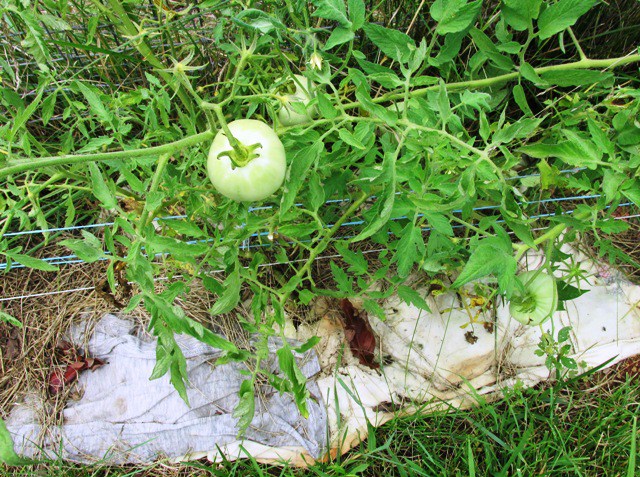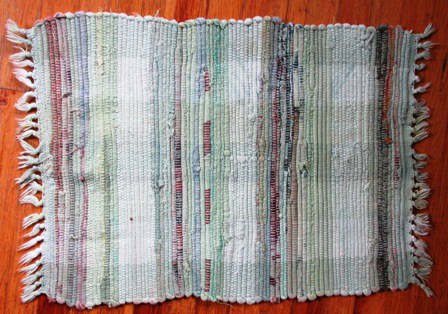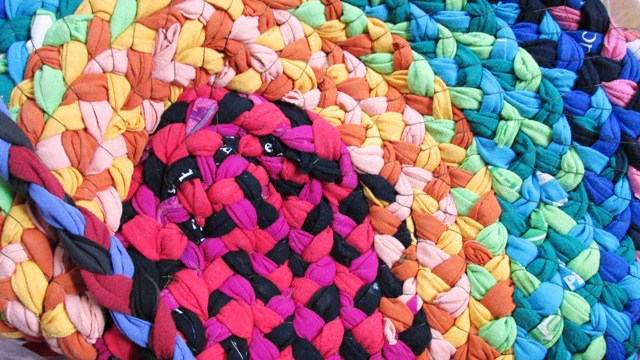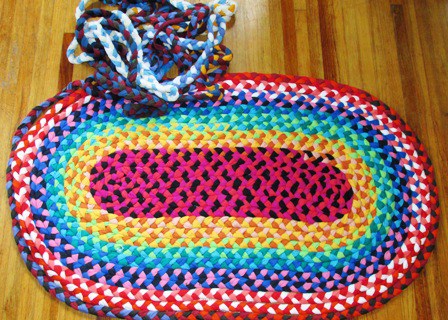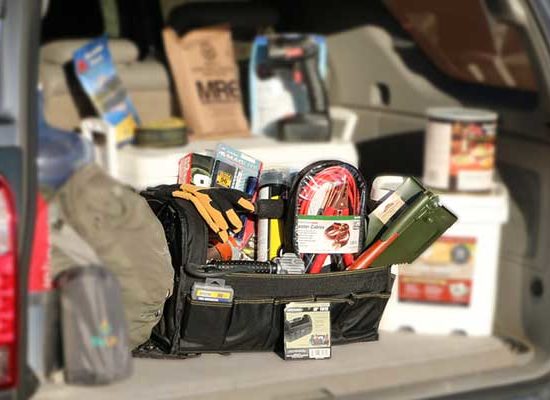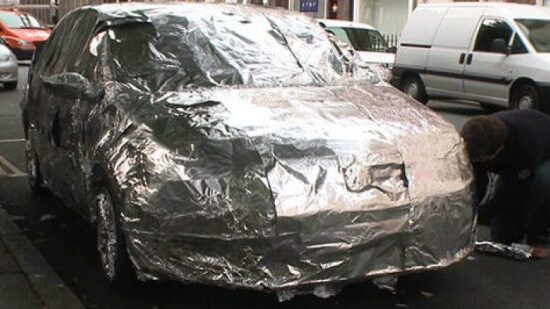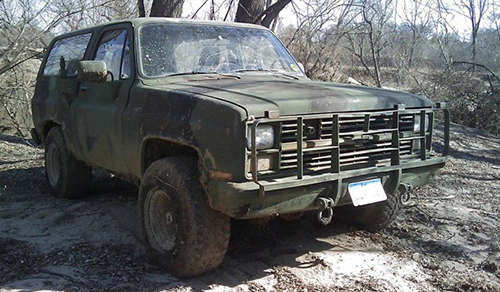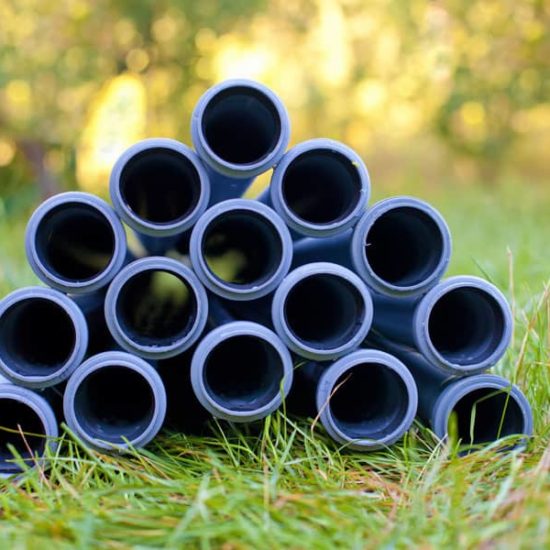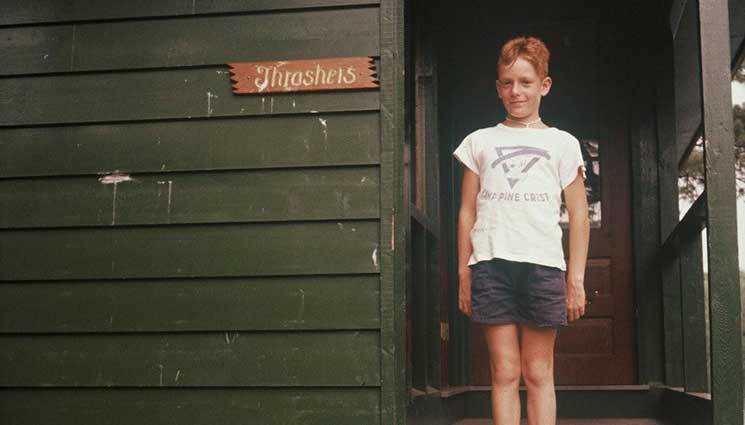
Is it just me, or are there entirely too many T-shirts in the world?
Perhaps I had a few as a youngster, but the first I can truly recall was a white T-shirt with a rubbery photo of a Studebaker on the front. I wore it with stylish orange hip-huger bell-bottoms embroidered with butterflies. Because I was 14 and bought the shirt with my dish washing earnings, I wore it until the emblem eroded and the fabric turned gray.
Now it seems, T-shirts are everywhere and often free, given out at fundraisers, sporting events and as advertising. Our local thrift stores receive so many donated T-shirts, they simply bag them up as shop rags. Trash bags crammed full sell for $4. Many of the shirts are brand new.
Fortunately, there are a gazillion ways to those brightly colored garments. Jersey fabric of 100-percent cotton is so versatile. It can be stretched, sewn flat, weaved, hooked, crocheted, dyed, tied in knots, and, best of all, the ends don’t unravel.
Weed-free veggies
One of my favorite uses for surplus white T-shirts is as garden mulch. Simply cut the side seams and under the arms. Lay the shirt flat with a plant growing up through the neck hole.
Yes, I know, the T-shirt looks funny laying there on the ground for a while. But the fabric quickly fades and does such a wonderful job of controlling weeds that I soon forget it was once a shirt.
Two fun up-cycling uses of T-shirts include weaving strips of jersey fabric into place-mats, table runners or rugs. Another is the pioneer-favorite braided rag rug. Both projects are uncomplicated and use materials at hand. You do not need an expensive loom, sewing machine or other gadgets. I’ll briefly explain weaving here.
Loom-less weaving
To weave T-shirts into useful household articles, you’ll need to assemble a loom – basically a wooden frame, like a large picture frame reinforced at the corners. This frame can be four sticks of wood fastened with screws. For large projects, use 2X4’s secured with angle iron.
A good loom size for scatter rugs is about 30 inches by 36 inches. To create larger rugs or table runners, several finished woven pieces can be stitched together (laced, actually).
To begin, tie off the warp (vertical) string to the bottom of the loom. Do not tie it in line with the frame side, but in 4-6 inches to make weaving easier. Wind the string figure-8 fashion to the top and bottom of the frame, pulling tightly and winding about 10 strands per inch. As you run out of one roll of warp string, simply tie on another. The knot will be hidden as you weave. When you have the desired width, tie off the end. For a finished width of 26 inches, that’s 260 loops around the loom.
No-fray fabric
Next cut your shirts into strips. Cut off the shirt bottom below any emblems, embroidery or other embellishments. Cut off the hem. If the shirt has side seams, cut those off. If not, just cut one side so that you end up with a large rectangle.
Depending on the fabric weight, cut strips 3/4 inch to 1 1/2 inches wide. You’ll want your strips to be a fairly even thickness once rolled. So, cut heavier fabric into thinner strips and lighter fabric wider.
Now, this is one of the really neat aspects of jersey – it rolls into a tube when stretched. When you have a nice stash of strips, begin stretching them to create a yarn-like tube.
So you can weave longer between stops, several strips can be stitched together to create longer strips. To create less bulk in your woven article, stitch the strips together diagonally by placing the end of one strip on top of another, right sides together, forming an “L.” Stitch a seam on the bias by hand or machine.
Ball up your T-shirt yarn until ready to use. Your strips can be sorted according to color to create a pattern, or woven at random.
Begin weaving first with the string you used for the warp. Weave over and under 4 strands of warp at a time, working your way back and forth until you have a band of about 1/2 inch. Weaving can be done by using a shuttle, a sort of long wooden spool, although fingers work just fine.
The fun part
Finally, it is time to weave your old T-shirts into something beautiful. Start weaving the first strip a few inches from the end, threading the strip over and under each warp string. When you reach the end of a row, beat down the yarn with your fingers, a wide-toothed comb or fork to keep the rows tight and straight. Then, come back the other direction with your yard, in the same over-and-under pattern.
When you come to the end of a fabric strip, stitch on another one and keep going. Instead of stitching, you can also knot your strips together for a bumpier, more rustic look. End your strips somewhere within the woven article and not on the end.
At the upper end of the woven article, after weaving the last row of fabric strips, weave another 1/2-inch wide band of warp string again.
To remove the article from the loom, cut the warp string from the frame, 8 strands at a time and tie it into overhand knots. Continue cutting and tying across the top and bottom of the woven article. Finally, lay the finished piece on a flat surface and trim the strands evenly to whatever length you prefer.
Braided rugs
To make a braided rag rug, cut strips at least 2 inches wide, again avoiding any thick emblems or embroidered designs. When you have a worthy pile of strips, begin by pinning together three strips and anchoring them to an immobile object, such as a doorknob or piece of furniture. Keep braiding and attaching more strips until you reach the desired rug size.
Here are a few tips about braided rugs made of T-shirt fabric:
- Large rugs are heavy and difficult to wash, so plan to use the rug in places without heavy foot traffic.
- Wash your rug by hand in a large tub outdoors and then line dry in the shade to prevent fading. Remember, it’s heavy when wet!
- Use a strong, thick cord for lacing the braids together, as thin carpet thread or plastic fishing line will eventually cut through the T-shirt fibers.
- Lining the back with an old sheet takes only another hour or so of effort, but will lengthen your rug’s life considerably.
Now, get busy, have fun and just think of how many Studebaker T-shirts you saved from the landfill.
Want more?
Here’s what the HuffPost Parents and HuffPost Women Facebook audiences said about giving T-shirts a new life.
Without further ado, here are 20 ideas for upcycling T-shirts, from the simple and practical to the downright creative.
Reusable bags
“Turn them into a reusable bag. Cut fringe and tie along the bottom, cut off sleeves to turn into handles.” ― Teri Lynn
“A no-sew reusable bag! So easy and I still get to see the cool shirts I’ve collected from races or fundraisers every time I use them.” ― Cari Cowling
“We host Family Service Fairs (where families do good for local nonprofits), and used old T-shirts to create reusable grocery bags to help get plastic bags out of the environment. The organization that inspired the station is called Boomerang Bags.” ― Doing Good Together
Quilts
“I’ve saved all my daughter’s scout, sports and school T-shirts and made her a quilt for college.” ― Della Yurasek Csehoski
“I made a blanket from old band T-shirts when I was pregnant to give to our son when he gets older but I’ll probably never really let him have it, it’s too cool!” ― Ali Walter
Jewelry
“My friend makes baby-friendly jewelry from old T-shirts ― necklaces, bracelets, earrings, and scarfs, etc.” ― Krisztina Oláh
“Turn them into headbands and jewelery, using braiding, knotting and macrame.” ― Danielle McEwan
“Cut them into strips, braid them into necklaces so my kids chew on them instead of their T-shirt collars.” ― Hortencia T. Benavidez
Pillows
“Stuffed the leftovers into a travel pillow for the kids. A tad bit harder than I would have liked it, but they don’t seem to mind. Otherwise, they are used for rags and other DIY projects.” ― Sylvia Salas-Brown
“We cut around the T-shirt design and add other fabrics around it to make pillows.” ― Marie Meidinger
“Pillow covers when kids are sick or I’m sweating at night.” ― AnneMarie Greenfield
Art
“I stretched some of my husband’s race tees over square art canvases. They hang in our family room along with my medal rack.” ― Anna-Marie Ward
“I frame my old concert tees in record album frames and then hang them up in my screened porch.” ― Michele N. Lotman
“Put them over canvases to hang on the wall.” ― Karla Marie
“Put into small embroidery hoop for ornaments or large for display.” ― Neelloc Niffit
Towels
“Towels for my curly hair!” ― Sarah Beth
“Use them to towel dry your hair, smoother than actual towels so supposed to be less damaging.” ― Soma Chatterji
Kid clothes
“Turning a T-shirt into a romper for a child.” ― Heidi Else
Pet accessories
“I have a dog who shreds her bedding when she boards so I make dog blankets for her by sewing four T-shirts together. They’re harder for her to destroy and cheaper than dog beds.” ― Melissa Westmoreland
“I have dogs, so anything fabric gets its second life as dog bedding.” ― Melissa Lynserra
“Our Aussie shepherd mix likes to play tug (and rip!) and then sleep with them.” ― Kathleen Wright
“Knot and tie into dog toys!” ― Tara Olivia
“My Key Club uses them to make chew toys for the local animal shelter.” ― Teri Madewell
“Old T-shirts make great surgery recovery shirts for dogs. My dog HATED that stupid cone, but the shirt didn’t bother him one bit!” ― Lauren Olcese-Mercurio
Donations
“Donate them to Rethreaded, an organization that helps people ‘sew a new story’ in their lives. They make and sell items, including various items from T-shirts.” ― Anita Davis Sullivan
“Donate them. I’m not crafty enough to make things, and there are always people who need gently used clothing. Pay it forward, y’all.” ― Erin Hablenko
Sleepwear
“I just sleep wearing them and use them in that way until they lose their usability. Best bedroom clothes for me.” ― Natalia Shveykina
“My daughter takes them to wear for pajamas.” ― Wendy Greve
Rugs
“I cut a bunch of shirts into half-inch strips and knitted a small area rug for our kitchen.” ― Elina Singh
“Braided T-shirt rugs with the pieces left over after doing quilts/pillows and rags.” ― Ashley Edinger
“You can cut them into strips to knit or crochet rag rugs.” ― Kelly McDaniel Whitney
Doll clothes
“My kids cut up old T-shirts and make clothes for the Elf.” ― Claudia Reis
Scarves
“I made T-shirt scarves for my daughters out of their old T-shirts.” ― Kimberly Anderson
“Cut it straight across, right beneath armpits, and create an infinity scarf.” ― Laura Coronado
Lampshades
“I’ve turned one into a macrame lampshade!” ― Danielle McEwan
Makeup Wipes
“Make reusable makeup-removing wipes (soaked in micellar water).” ― Lauren Neiger
Rags
“Mine go from T-shirts, to PJs, to rags after that the trash!” ― Brandy Allen-Burgard
“I use them for polishing silver (inherited a bunch, pain in the butt to maintain).” ― AnneMarie Greenfield
Hair care
“I wear them when coloring my hair and tear them into strips for hair curls.” ― AnneMarie Greenfield
Reinvented clothes
“Give it new details … i.e., cut off the sleeves and give it a different neck.” ― Mish Buonantuono-Rausch
“Re-design to new shirts, bags, skirts … ” ― Rachelle Carrillo
Gardening aids
“Garden ties for holding up plants like tomatoes.” ― Neelloc Niffit
“Tear them into strips and use those strips to tie up tomato plants in the garden or other plants/trees.” ― AnneMarie Greenfield
Recycling
“Recycle them. School has a bin and it raises money for the school.” ― Stephanie Tapia
What do think? Right when you thought there’s nothing much to do today..
On a different note, here’s some other self-sufficiency and preparedness solutions recommended for you:
The Lost Ways (The vital self-sufficiency lessons our great grand-fathers left us)
Survival MD (Knowledge to survive any medical crisis situation)
Backyard Liberty (Liberal’s hidden agenda: more than just your guns…)
Alive After the Fall (Build yourself the only unlimited water source you’ll ever need)
The Lost ways II (4 Important Forgotten Skills used by our Ancestors that can help you in any crisis)
The Patriot Privacy Kit (Secure your privacy in just 10 simple steps)


